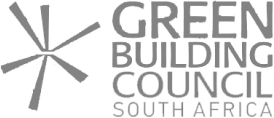JLL SA releases Q4 2017 market reports for office, industrial, retail sectors
Category Industrial News
JLL SA has released its Q4 2017 market reports for key markets across the country, including the office markets in Johannesburg, Durban and Cape Town; the industrial markets in Johannesburg and Durban; and an outline of the South African retail market.
The analysis, amid evolving political sentiment and returning optimism in the local economy, lends perspective to the current commercial property landscape. The announcement of Cyril Ramaphosa as president of the ANC in December 2017 and his subsequent appointment as the country’s new president, as well as an improving GDP, has much to do with the positive outlook for the industry.
Facts and figures for the office sector have revealed markedly different environments across the three metros:
The Johannesburg office market continues to record the highest vacancy rate compared to other major metros in South Africa, with the Q4 vacancy rate sitting at 12.6%. Office development activity is still concentrated in Johannesburg, accounting for more than 67% of the ongoing office developments nationwide, despite oversupply concerns. While no short-term improvement is expected, it is clear that the city remains an attractive corporate address for many blue-chip and smaller businesses. And while the Johannesburg vacancy rate may currently be stagnant, there has been an improvement on a nodal level. It is surmised that nodes like Sandton, Rosebank and the CBD have contributed positively to the decrease in the national vacancy rate.
Quarter-on-quarter volatility in the Durban office sector has made it a very difficult market to predict in the past year. In JLL’s Q3 report, the question of a possible oversupply developing in the market was raised. Despite an increase in the vacancy rate to 12.4% in Q4 2017 from 11.7% in Q3 2017, the market has seen a 1.5% decline in the y/y vacancy rate. This, regardless of the notable increase in overall accommodation in the market, with an 11.0% increase of office stock in the past year.
This anecdotal evidence suggests that developers in the Durban market have been timeous in adding accommodation to what seems to be a growing market. Net absorption is estimated at just over 158,000m², proportional to the 178,000m² growth in accommodation in the past year. It also suggests that the development pipeline may be insufficient for future growth in the market. Current projects indicate that office stock will have increased by a further 134,500m² into 2019, a 9.0% increase over two years.
It was a positive close to 2017 for a resilient Cape Town office market. There are indications of vacancy improvements across all sub-sectors, most notably in Grade P and Grade A accommodation. While a trend to convert office buildings to residential use has contributed to the decline in vacancies, office stock still increased by 4.0% in 2017.
Compared to other real estate sub-sectors, the country’s industrial sector was a key performer in 2017 with some encouraging statistics to note:
The year ended on a positive note for the Durban industrial property market. Analysis reports to rental growth across all grades. Average rentals witnessed growth on a yearly basis, attributable to annual escalations, with Grade A accommodation recording the highest growth of 9.0% y/y. The market has seen much developer interest in logistics and distribution facilities, including the Clairwood Logistics Park, one of the major ongoing developments located 10km from the Port of Durban, which is planned to span over 80,000m².
The Johannesburg industrial market ended 2017 with a relatively low vacancy rate, and a substantial development pipeline. The push towards high-end modern facilities is driving rental rates up, contributing to positive investor sentiments. To date, the Johannesburg industrial market has in excess of 884,000m² in the development pipeline, mostly concentrated in the northern and eastern parts of the city.
Industry players should take care not to overstate the buoyancy and confidence in the sector. Beneath the surface there seems to be a segmented market developing: on the one side Grade P accommodation continues to be landlord-driven while on the flipside, an occupier market is developing in the Grade A and Grade B space, with landlords incentivising occupiers with lower rental rates. This will play a significant role in the deals of 2018.
Lastly in the South African retail space, vacancy rates went up in Q4 2017 across the board compared to the same period in the previous year. Neighbourhood and community shopping centres continued a positive trajectory, performing better than bigger centres. The poor trading density growth reflects the consumer’s short- to medium-term concern for economic growth. Vacancy rates ended the quarter at an average of 4.0%. Super-regional shopping centres witnessed a further increase from 4.1% in the previous quarter to 4.7% in Q4, while small regional centres recorded a 1.0% vacancy rate decline on a yearly basis.
The Consumer Confidence indicator is expected to improve as we head deeper into 2018 with other indicators such as household credit extension already showing signs of improvement. This, coupled with the recent hopeful political changes and a strengthening rand, bodes well for a positive turn in property investment decisions.
Office sector
Facts and figures for the office sector have revealed markedly different environments across the three metros:
The Johannesburg office market continues to record the highest vacancy rate compared to other major metros in South Africa, with the Q4 vacancy rate sitting at 12.6%. Office development activity is still concentrated in Johannesburg, accounting for more than 67% of the ongoing office developments nationwide, despite oversupply concerns. While no short-term improvement is expected, it is clear that the city remains an attractive corporate address for many blue-chip and smaller businesses. And while the Johannesburg vacancy rate may currently be stagnant, there has been an improvement on a nodal level. It is surmised that nodes like Sandton, Rosebank and the CBD have contributed positively to the decrease in the national vacancy rate.
Quarter-on-quarter volatility in the Durban office sector has made it a very difficult market to predict in the past year. In JLL’s Q3 report, the question of a possible oversupply developing in the market was raised. Despite an increase in the vacancy rate to 12.4% in Q4 2017 from 11.7% in Q3 2017, the market has seen a 1.5% decline in the y/y vacancy rate. This, regardless of the notable increase in overall accommodation in the market, with an 11.0% increase of office stock in the past year.
This anecdotal evidence suggests that developers in the Durban market have been timeous in adding accommodation to what seems to be a growing market. Net absorption is estimated at just over 158,000m², proportional to the 178,000m² growth in accommodation in the past year. It also suggests that the development pipeline may be insufficient for future growth in the market. Current projects indicate that office stock will have increased by a further 134,500m² into 2019, a 9.0% increase over two years.
It was a positive close to 2017 for a resilient Cape Town office market. There are indications of vacancy improvements across all sub-sectors, most notably in Grade P and Grade A accommodation. While a trend to convert office buildings to residential use has contributed to the decline in vacancies, office stock still increased by 4.0% in 2017.
Industrial sector
Compared to other real estate sub-sectors, the country’s industrial sector was a key performer in 2017 with some encouraging statistics to note:
The year ended on a positive note for the Durban industrial property market. Analysis reports to rental growth across all grades. Average rentals witnessed growth on a yearly basis, attributable to annual escalations, with Grade A accommodation recording the highest growth of 9.0% y/y. The market has seen much developer interest in logistics and distribution facilities, including the Clairwood Logistics Park, one of the major ongoing developments located 10km from the Port of Durban, which is planned to span over 80,000m².
The Johannesburg industrial market ended 2017 with a relatively low vacancy rate, and a substantial development pipeline. The push towards high-end modern facilities is driving rental rates up, contributing to positive investor sentiments. To date, the Johannesburg industrial market has in excess of 884,000m² in the development pipeline, mostly concentrated in the northern and eastern parts of the city.
Industry players should take care not to overstate the buoyancy and confidence in the sector. Beneath the surface there seems to be a segmented market developing: on the one side Grade P accommodation continues to be landlord-driven while on the flipside, an occupier market is developing in the Grade A and Grade B space, with landlords incentivising occupiers with lower rental rates. This will play a significant role in the deals of 2018.
Retail sector
Lastly in the South African retail space, vacancy rates went up in Q4 2017 across the board compared to the same period in the previous year. Neighbourhood and community shopping centres continued a positive trajectory, performing better than bigger centres. The poor trading density growth reflects the consumer’s short- to medium-term concern for economic growth. Vacancy rates ended the quarter at an average of 4.0%. Super-regional shopping centres witnessed a further increase from 4.1% in the previous quarter to 4.7% in Q4, while small regional centres recorded a 1.0% vacancy rate decline on a yearly basis.
The Consumer Confidence indicator is expected to improve as we head deeper into 2018 with other indicators such as household credit extension already showing signs of improvement. This, coupled with the recent hopeful political changes and a strengthening rand, bodes well for a positive turn in property investment decisions.
Author: Property Wheel







